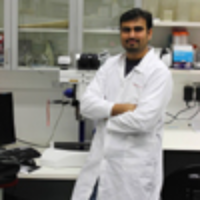Physiotherapy Undergraduate Students’ Perception About Clinical Education; A Qualitative Study
Published on: 22nd November, 2024
Background: Clinical education is an important component of physiotherapy education programs. It provides insights to the students in the fields of physiotherapy practice, develops leadership, and enhances their clinical skills in patient assessment, examination, diagnosis, treatment, planning, and intervention selection. The dimension of physiotherapy education is in the developing phase in Nepal. For further growth, the experience and the perception of the students are very important. Through this, the facilitators and barriers in physiotherapy clinical education need to be recognized. Therefore, this study aimed to explore the facilitators and barriers in physiotherapy clinical education in Nepal from a student’s perspective.Objectives: The main objective of this study was to identify the perception of physiotherapy undergraduate students about their clinical education and to find out the facilitators and barriers in clinical education.Methods: A qualitative research using focused group discussion was conducted. Ethical considerations were taken from respective departments and IRC approval was taken. BPT 3rd year, 4th year, and intern students of KUSMS were called to participate in the study. After the consent from the participants, focus groups of 6 participants (2 participants from each 3rd year, 4th year, and intern) were formed. In five FGDs, data saturation was observed and no further FGDs were conducted. FGDs were collected with audio tape recordings. The data were transcribed verbatim and translated into the English language. Then data coding was done and themes and sub-themes were generated from the codes.Results: Through the transcribed and translated data, seven themes were generated which were clinical education, student expectation, student attitude and behavior, roles and responsibilities of clinical educators, exposure, resources, and miscellaneous. These headings explained the perception of facilitators and barriers.Conclusion: The facilitators and barriers to physiotherapy clinical education were identified through student’s perspectives. These findings should be considered while preparing the guiding document for clinical education to enhance the quality of education.
Efficiency of Artificial Intelligence for Interpretation of Chest Radiograms in the Republic of Tajikistan
Published on: 25th November, 2024
The article presents data from recent publications and own data on screening studies with interpretation of chest radiographs using artificial intelligence CAD (Computer-Assisted Diagnosis), which, according to WHO recommendations, provides more accurate clinical thresholds for deciding who needs to take a sputum test. Another aspect of the WHO recommendations is the cost-effectiveness of CAD as a tool for triaging patients with tuberculosis symptoms in low-income countries with a high incidence of tuberculosis. Compared with smear microscopy and GeneXpert, without preliminary sorting, the use of mobile digital X-ray machines equipped with a CAD tool reduces costs, allowing sorting of individuals suspected of having tuberculosis for testing on GeneXpert, while reducing the time to start tuberculosis treatment.Thus, conducting a study using portable X-ray machines using a CAD program is a low-cost and easy-to-implement method, does not require large funds, does not require separate rooms, is highly effective, has good image quality, allows you to quickly clarify individuals suspected of having tuberculosis, differentiating it from other pathological changes in the lungs.Our experience shows that machine analysis of chest computed tomography data, due to the higher resolution capabilities of the method and the absence of fundamental disadvantages of radiography, including the effect of shadow summation, the presence of “blind” zones, etc., is finding increasing application in both diagnostics and screening of respiratory diseases. Our use of this tool allowed us to identify additional new cases of phthisio-onco-pulmonary diseases in field conditions.
Anterior Laparoscopic Approach Combined with Posterior Approach for Lumbosacral Neurolysis: A Case Report
Published on: 25th November, 2024
Background and importance: Sacral fractures often lead to injuries of the lumbosacral nerve, which will cause tremendous damage to the patient’s motor and sensory functions. At present, the most commonly used surgical method is the posterior median approach, the extent and degree of neurolysis are often insufficient, so the effect of neurolysis is not well, and the functional recovery of patients after operation is often incomplete.Clinical presentation: The patient was a 17-year-old male who accidentally fell from a height and landed on his hip. The main clinical feature of the patient was persistent radiating pain in the right lower extremity with right lower limb sensorimotor disorder. The results of the X-ray examination indicated a sacral fracture and a right pubic fracture. After the injury, the patient underwent pelvic internal fixation surgery within 72 hours. Then 6 months after the surgery, there was no significant improvement in right lower limb function, and the patient came to our hospital seeking treatment. Considering the severe lumbosacral plexus injury and the history of surgery, we performed an “Anterior surgery approach combined with posterior approach for lumbosacral neurolysis” for the patient, postoperative radiation pain disappeared completely, and there were significant improvements in the muscle strength of some muscles and sensory function.Conclusion: The relaxation of the lumbosacral plexus is usually performed through a single surgical approach, which has great limitations in the effect of relaxation. Here, we demonstrate a case in which posterior lumbar incision and anterior laparoscopic lumbosacral plexus neurolysis can benefit the patient, the lumbosacral nerve was released to a great extent. We aim to bring this case to the attention of our worldwide neurosurgical colleagues and share our surgical approach to assist those who may encounter this case in the future.
Prevention of Atrial Fibrillation using Vaughan Williams Class IC Drugs for Multiple Premature AtrialContractions: A Clinical Observational Study
Published on: 8th November, 2024
Background: Atrial fibrillation (A-Fib) poses a significant clinical challenge, particularly in the elderly and those with hypertension. If A-Fib represents one stage in the spectrum of electrical degeneration caused by aging-induced remodeling of the left atrial wall, catheter ablation is not an essential treatment. The efficacy of Vaughan Williams Class IC drug in preventing the progression of multiple premature atrial contractions (mPAC) toward paroxysmal atrial fibrillation (PAF) and A-Fib in the earlier stage of histological change was investigated.Method and results: Group A (4 patients with mPAC) and Group B (9 patients with PAF) were treated with Class IC drugs. Treatment outcomes were compared between these two Groups and Group C (8 patients with chronic A-Fib). Follow-up assessments were performed to evaluate the maintenance of sinus rhythm. All mPAC patients maintained sinus rhythm during the follow-up period. In the PAF group, 8 out of 9 patients maintained their sinus rhythm. Conclusion: Early treatment with Class IC drugs shows promise in preventing the progression of A-Fib and maintaining sinus rhythm in patients with mPAC and PAF. These findings highlight the potential role of pharmacological therapy in delaying the onset of A-Fib, thereby improving clinical outcomes and reducing the need for invasive procedures such as ablation.
Impact of Intravenous Busulfan Pharmacokinetics on Safety in Pediatric Patients who have undergone Hematopoietic Stem Cell Transplant
Published on: 3rd December, 2024
Introduction: Busulfan (Bu)-based regimens are crucial for myeloablative conditioning in pediatric allogeneic stem cell transplantation. Despite its efficacy, Intravenous Bu has a narrow therapeutic index and variable pharmacodynamics especially in children, heightening the risk of adverse events. This study explores Bu dosing and related organ toxicities in pediatric patients at a tertiary center in Saudi Arabia.Methodology: This retrospective study at King Fahad Specialist Hospital in Dammam (KFSH-D), Saudi Arabia, included pediatric patients (≤16 years) treated with intravenous Bu before bone marrow transplantation from 2010 to 2022. Pharmacokinetic dose adjustments were based on AUC targets of 900-1350 µMol-min. Descriptive measures included mean, Standard Deviation (SD), median, minimum-maximum values, counts, and percentages. Statistical analyses used Kruskal-Wallis, Chi-square, and Fisher’s exact tests. Ethical approval was obtained from KFSH-D.Results: We identified 44 pediatric patients who underwent Bu prior to HSCT. Mean age was 4.95 ± 2.49 years, with a female majority (56.8%). Primary diseases included Beta Thalassemia (34.09%), Neuroblastoma (29.55%) among others. There was no significant difference in the cohort’s demographic and clinical features of the cohort. Nonetheless, higher infections were found in the Low-AUC group (66.7%) compared to the Target-AUC (40.0%) and Higher-AUC groups (0.0%) (p = 0.015).Conclusion: This study emphasizes the need for therapeutic drug monitoring and individualized Bu dosing in pediatric HSCT to minimize toxicity and improve outcomes. Larger multicenter studies are recommended to refine dosing strategies and enhance the safety and efficacy of Bu-based regimens.
Congenital Dysfibrinogenaemia: A Family Case Report
Published on: 3rd December, 2024
Congenital fibrinogen qualitative disorders, including dysfibrinogenemia and hypo-dysfibrinogenaemia, are highly heterogeneous, both in clinical manifestation and for the mutational molecular spectrum driving these disorders. Correlations between phenotype and genotype remain poorly defined. Considerable work lies ahead in order to achieve diagnostic and prognostic precision and subsequently provide targeted management for this rare disease. Here we report the laboratory test, the clinical and molecular characterisation of a family with dysfibrinogenemia.
Sleep Disorders and Sleep Studies Case Reports
Published on: 11th December, 2024
Sleep disorders represent a significant public health concern due to their widespread prevalence, impact on overall health, and the economic burden they impose. These disorders encompass a broad spectrum of conditions, ranging from insomnia and obstructive sleep apnea (OSA) to narcolepsy, restless legs syndrome (RLS), and parasomnias. They are often associated with comorbidities such as cardiovascular diseases, metabolic dysfunctions, and mental health disorders, making their identification and management critical.The publication of this work is of high interest as it contributes to the expanding body of literature focused on understanding the complex interplay between sleep disorders and health outcomes. By presenting detailed case reports, this study provides valuable insights into the diagnostic challenges, treatment modalities, and potential avenues for personalized interventions in sleep medicine. Case reports are particularly important in this field as they shed light on unique presentations and rare conditions that might otherwise go unnoticed in large-scale epidemiological studies. From an epidemiological perspective, sleep disorders are highly prevalent globally. According to the World Health Organization (WHO), approximately 30% - 45% of the global population experiences sleep disturbances. Obstructive sleep apnea, for instance, affects nearly 1 billion individuals worldwide, with varying prevalence across age, gender, and geographic regions. Insomnia affects roughly 10% - 30% of adults, with rates as high as 50% - 60% in older populations.Meanwhile, narcolepsy, though rare, is estimated to affect 1 in 2,000 people in the general population. These statistics underscore the pressing need for enhanced diagnostic methods, improved treatment strategies, and comprehensive patient management. By detailing real-world cases, this publication aims to bridge the gap between clinical observations and broader scientific understanding. The insights gained from these case studies have the potential to inform future research directions, improve clinical practices, and ultimately enhance patient outcomes in sleep medicine.Sleep disorders affect millions of individuals globally, disrupting physical, mental, and emotional well-being. Conditions such as insomnia, obstructive sleep apnea (OSA), narcolepsy, and restless legs syndrome (RLS) are among the most studied. This paper examines the etiology, diagnosis, and management of sleep disorders, presenting detailed case reports and integrating relevant sleep study findings. Figures such as polysomnography (PSG) outputs and statistical trends provide visual insights into diagnostic and therapeutic interventions. Sleep disorders encompass a wide range of conditions that significantly disrupt sleep quality and overall well-being. Common disorders such as insomnia, obstructive sleep apnea (OSA), narcolepsy, and restless legs syndrome (RLS) affect millions globally, posing risks to physical health, mental stability, and cognitive performance. This study explores the clinical presentation, diagnostic approaches, and management of sleep disorders through the lens of detailed case reports and sleep study data.Polysomnography (PSG), the gold standard for sleep disorder diagnosis, plays a pivotal role in identifying abnormal sleep patterns, respiratory irregularities, and neural disruptions. Multiple sleep latency tests (MSLT) and actigraphy complement PSG, offering insights into disorders like narcolepsy and circadian rhythm abnormalities. This paper presents three representative case reports: chronic insomnia, severe OSA, and narcolepsy with cataplexy. Each case is analyzed in-depth, highlighting patient history, PSG findings, treatment interventions, and outcomes. For chronic insomnia, cognitive-behavioral therapy for insomnia (CBT-I) and pharmacological intervention resulted in marked improvements in sleep latency and efficiency. In the OSA case, continuous positive airway pressure (CPAP) therapy significantly reduced the apnea-hypopnea index (AHI) and alleviated daytime symptoms. The narcolepsy case demonstrates the efficacy of modafinil and sodium oxybate in managing excessive daytime sleepiness and cataplexy.Despite advancements, challenges persist in the field, including patient adherence to therapy, accessibility to specialized sleep studies, and the ethical implications of AI-driven diagnostic tools. Future research should focus on scalable, patient-centric approaches and the role of emerging technologies in enhancing diagnostic accuracy and treatment efficacy. This paper aims to contribute to the evolving understanding of sleep disorders, bridging clinical case insights with the broader implications for sleep health and research.
Hepatic Pseudolymphoma Mimicking Neoplasia in Primary Biliary Cholangitis: A Case Report
Published on: 19th December, 2024
Visualizing a nodule in the liver parenchyma of a patient with chronic liver disease raises the suspicion of hepatic malignancy. We report here the case of a 63-year-old female with primary biliary cholangitis (PBC) in whom a hepatic pseudolymphoma (HPL) was incidentally detected. This fairly rare lesion mimics primary liver cancer, has no specific radiological features, and requires histology for a definite diagnosis. This tumor-like lymphoid liver proliferation has been reported in clinical situations with immune-mediated inflammation including PBC. It can be observed in many organs but very rarely in the liver. The diagnosis of HPL should be considered when detecting a liver nodule in a patient with this particular chronic cholestatic liver disease.
Other Applications of Amniotic Membranes: Case Series
Published on: 23rd December, 2024
The amniotic membrane, used for over a century, is a widely recognized therapeutic tool in regenerative medicine and reconstructive surgery. Its primary indication is in the treatment of deep partial-thickness burns, where it facilitates epithelialization by providing an optimal environment for tissue regeneration. However, its versatility allows its use in various clinical scenarios, particularly in wounds or trauma where immediate closure is not possible, either due to the patient’s condition or the characteristics of the wound itself. Its most notable benefits include the prevention of necrosis due to desiccation, minimizing the loss of essential proteins, fluids, and electrolytes, reducing the risk of infection by acting as a physical barrier and alleviating pain by covering and stabilizing the wound.Additionally, its ability to act as a temporary biological cover offers a valuable solution in complex cases, improving both the prognosis and the patient’s management.A case series is presented demonstrating various applications of the amniotic membrane.
Crime Scene Examination of Murder Case
Published on: 23rd December, 2024
This case study is based on a crime scene examination murder of a young person. This case was reported in the police station located in the north-northeast district of Delhi, India. An unknown dead body was found lying on the roadside with a head injury, suspected to be a road accident. A team of forensic experts was called for a crime scene examination. After examination, it was observed that the body had multiple injuries. There was a blood pattern seen behind the hand and the head of the dead body. This was a suspicion of a murder case, instead road accident. After body identification by the family members and the last location of the victim, the place of murder i.e. house has been identified and examined by the expert team and found a lot of incriminating evidence from the scene of the crime. A two-wheeler was recovered suspected to be used to dump the dead body on the roadside. After examination of the vehicle, clue material found it was found. After a complete examination of the spot and vehicle, sufficient forensic evidence was collected and preserved to establish the crime was murder, not a road accident. This case study involved the application of scientific tools, interpretation of the sequence of evidence at the scene, systematic study of case-related information, and the logical formulation of a theory to give the proper information to the investigating agency. It has been concluded that the boy was murdered in the room and dumped roadside by using the bike.
The Fundamental Role of Dissolved Oxygen Levels in Drinking Water, in the Etiopathogenesis, Prevention, Treatment and Recovery of Cerebral Vascular Events (Stroke)
Published on: 16th January, 2025
Stroke is a clinically defined syndrome of acute focal neurological deficit attributed to vascular injury (infarction, hemorrhage) of the central nervous system. Stroke is the second leading cause of death and disability worldwide. Stroke is not a single disease but can be caused by a wide range of risk factors, disease processes and mechanisms. Approximately 15% of strokes worldwide are the result of intracerebral hemorrhage, which can be deep (basal ganglia, brainstem), cerebellar or lobar. A minority (about 20%) of intracerebral hemorrhages are caused by macrovascular lesions (vascular malformations, aneurysms, cavernomas), venous sinus thrombosis or rarer causes.
Clinical Severity of Sickle Cell Anaemia in Children in the Gambia: A Cross-Sectional Study
Published on: 8th January, 2025
Background: Sickle cell anaemia (SCA) in children demonstrates a broad range of clinical manifestations and serious complications. Assessment of disease severity in specific populations is necessary to plan services and optimise care. Aim: To describe the clinical severity of SCA and associated sociodemographic and clinical factors in children in Gambia.Methods: The presence of lifetime complications was confirmed by history and review of medical charts. We determined clinical severity using a validated scoring system and related the severity to sociodemographic and clinical factors.Results: In 130 study participants, ages ranged from 5 to 15 years with a mean (SD) age of 9.74 (2.81) years. Eleven (8.5%) children had had acute chest syndrome, 7 (5.4%) avascular necrosis of the femoral head, 6 (4.6%) gallstones, 5 (3.8%) stroke and 1 (0.8%) priapism over their lifetime. Disease severity was classified as mild in 108 (83.1%) children, moderate in 17 (13.1%) and severe in 5 (3.8%). Age, age at diagnosis, sex, ethnicity, social class, and treatment with hydroxyurea was not significantly correlated with SCA clinical severity (P values 0.10-0.84).Conclusion: The high proportion of children with mild disease may be due to the high prevalence of Senegalese β-haemoglobin haplotype in the Senegambia subregion. However, the presence of moderate or severe disease in almost 1 in 5 children calls for concerted efforts in SCD care in this region.
A Study of Endoscopic and Clinical Profile of Dyspepsia in Afghan Momand Medical Complex & Research Center, Eastern Region, Nangarhar, Afghanistan
Published on: 10th January, 2025
Dyspepsia refers to acute, chronic, or recurrent pain or discomfort centered in the upper abdomen. An international committee of clinical investigators (Rome III Committee) has defined Dyspepsia as Epigastric pain or Burning, early satiety, or postprandial fullness Dyspepsia occurs in 15 % of the Adult population and accounts for 3% of general medical office visits. The descriptive study was carried out in Eastern Afghanistan, Afghan Momand Medical Complex & Research Center, Department of Gastroenterology, during the years 2023-2024. To know the Clinico-Endoscopy of Dyspepsia, for patients who present with investigated Dyspepsia to Gastroenterological OPD & IPD. The study result showed, there were a total of patients 467, and of these patients 230 were Male and 237 were Female. According to the Age, 45 patients were under Age <20, 219 patients were between the ages 21-40 years, 130 patients were between ages 41-60 years and 73 patients were over 60 years of Age. However according to the presentation, 357 patients had Dyspepsia, 59 patients had Dysphagia, 13 patients had Chronic Liver Diseases & Screened for Varices, 3 patients presented after Acid ingestion, 2 patients had Anemia, 11 patients had persistent vomiting and 22 patients had suspected GI-Bleeding. Furthermore in Esophageal findings from a total of 467 patients 34 patients had Esophageal Candidacies, 6 patients had Esophageal Narrowing, 25 patients had Esophageal Growth, 71 patients had Hiatus Hernia, 180 patients had LA Grade A Esophagitis, 21 patients had LA Grade B Esophagitis, 6 patients had LA Grade C Esophagitis, 3 patient had LA Grade D Esophagitis. 16 patients had Lax Lower Esophageal Sphincter, 9 Patients had High-Risk Esophageal Varices, 3 patients had Small Esophageal Varices and 150 patients had Normal Esophagus and in Gastric findings from total all above patients, 4 patients had Antral Gastritis, 50 patients had Corpus Gastritis, 1 patient had Fundal Gastritis, 4 patients had Nodular Gastritis, 199 patients had Pan-Gastritis, 108 patients have Severe Pan Erosive Gastritis, 23 patient had Gastric Erosions, 6 patients had PHG (Portal Hypertensive Gastropathy), 3 Patients had Fundal Varices, 5 patients had Gastric Polyps, 5 patients had Gastric Growth, 2 patients had Pyloric Stenosis, 8 patients stomach not seen due to Esophageal Growth, 67 patients stomach were normal. In the present study there were Duodenal findings from a total of the above patients 48 had Duodenitis, 2 patients had Duodenal Polyps, 2 patients had duodenal ulcers, 1 patient had Duodenopathy, 2 patients had Duodenopathy, 2 patients Duodenum not seen due to Pyloric Stenosis and 413 patients Duodenum were normal. Regarding the habits in our study in which a total of 467 patients were examined 135 of the above patients had snuff habits, 103 patients had smoking habits, 2 patients were Heroin addicts and 227 of the total patients didn’t have any habits (the majority of them were using spicy food, overfeeding, drinking of nonalcoholic beverages, fatty foods, NSAIDs ...) and the higher incidence of Dyspepsia was in Female patients, Also with the age between 21-40 years (43%) patients, Also the higher incidence of Dysphagia 47% were in patients with Age >60 years, the Endoscopy showed that 83% patients had Gastritis also higher incidence regarding the habits 29% had snuff habit and 22% had a smoking habit.
Double-Positive Anti-GBM and ANCA Vasculitis: 2 Case Reports and Review of the Literature
Published on: 21st January, 2025
Double-Positive Patients (DPPs), characterized by the simultaneous presence of Anti-Neutrophil Cytoplasmic Antibody (ANCA) and anti-Glomerular Basement Membrane (anti-GBM) antibodies, represent a rare subset in systemic vasculitis. We present two cases of DPPs with renal involvement and review the existing literature to elucidate the clinical characteristics, histopathological findings, management strategies, and prognostic outcomes associated with this condition. Both cases exhibited renal involvement with rapidly progressive glomerulonephritis, requiring renal replacement therapy. Renal biopsies confirmed crescentic glomerulonephritis with features of both anti-GBM disease and ANCA-associated vasculitis. Management included high-dose glucocorticoids, cyclophosphamide, and consideration of plasma exchanges. Double-positive ANCA and anti-GBM vasculitis pose challenges in management and prognosis. Further research is essential to improve therapeutic strategies for this rare and heterogeneous condition.
PTM-Fetuin-A: A Novel Biomarker for Early Detection of Diabetic Kidney Disease
Published on: 24th January, 2025
Chronic Kidney Disease (CKD) is a significant public health issue with a rising prevalence globally. Diabetic kidney disease (DKD), a leading cause of CKD, necessitates improved biomarkers for early detection and effective management. Traditional markers such as serum creatinine, estimated glomerular filtration rate (eGFR), and albuminuria have notable limitations in sensitivity and specificity, especially for early detection. Fetuin-A, specifically its post-translationally modified form (PTM-Fetuin-A), has emerged as a potential novel biomarker for DKD. This study evaluates PTM-Fetuin-A in a cohort of Bulgarian patients with type 1 and type 2 diabetes, assessing its correlation with traditional markers such as albuminuria and eGFR. Significant correlations were observed between PTM-Fetuin-A and these indicators (e.g., Pearson’s r = 0.447, p = 0.025 for albuminuria), highlighting its ability to detect early kidney function decline. Furthermore, PTM-Fetuin-A demonstrated potential as a non-invasive tool for identifying normoalbuminuric DKD, addressing gaps left by conventional biomarkers. By offering additional prognostic value, PTM-Fetuin-A could improve the early diagnosis and clinical management of diabetic patients, reducing the burden of CKD.
Clinical Significance of Anterograde Angiography for Preoperative Evaluation in Patients with Varicose Veins
Published on: 23rd January, 2025
Objective: To investigate the clinical significance of preoperative lower extremity venography in patients with varicose veins.Methods: From February 2019 to July 2023, 498 patients (583 diseased lower limbs) with lower limb varicose veins as the first symptom were selected and admitted to the Seventh People’s Hospital of Chongqing. Paracentesis of the deep veins of the lower extremities was performed in all affected limbs to observe the morphology of the deep veins from the ankle to the pelvis, the patency of the deep veins, and the reflux of contrast medium when the patients performed the Valsalva manoeuvre. The aetiology of varicose veins was analysed according to the imaging manifestations and individualised treatment plans were formulated according to the different aetiologies.Results: The imaging success rate of 583 diseased lower limbs was 100%, of which 285 (48.9%) were primary lower limb deep vein valve insufficiency, 186 (32%) were simple superficial varicose veins, 63 (10. 8%) were iliac vein compression syndromes, 41 (5%) were post-thrombotic syndromes of the deep veins of the lower limbs and the others (primary deep vein avascularity of the lower limbs, bifemoral venous malformations, congenital varicose vein osteohypertrophy syndrome, tumour compression, etc.) 8 articles (1.37%).Conclusion: The advantages of lower extremity deep vein bypass angiography are simple operation, low trauma, and high specificity, which can help to diagnose the aetiology of lower extremity varicose veins and guide the clinical treatment.
Evolution of the Mineralocorticoid Receptor and Gender Difference in Cardiovascular Pathology
Published on: 28th January, 2025
Retracing the evolution of Mineralocorticoid Receptors (MR) obliges us to take an instructive as well as fascinating leap back in time. This journey teaches us that the relationship between MRs and what we consider their natural ligand, aldosterone, has not always been an exclusive one. MRs operated for a very long time in the oceans and, in any case, in an aquatic environment, stimulated by ligands other than aldosterone, and exercising functions that we still do not know well but which were certainly different from those they currently perform in terrestrial vertebrates, where they maintain normal sodium and body fluids. The history of MRs was initially intertwined with that of female sexual hormones, in particular with progesterone, which was one of the first agonists for MRs, before becoming, with the transition to the terrestrial environment, an important antagonist. This initial intertwining could be the cause of the sexual dimorphism that can be glimpsed when these receptors are overstimulated, as emerges from many experimental studies and some clinical data and/or when antagonistic drugs for these receptors are studied. This must be taken into account in the planning of clinical studies, especially randomized controlled trials, in which the presence of the two sexes must always be well balanced and in the interpretation of the results which must always be performed being well aware of the gender of participants. This does not always happen, however.
Ischemic Stroke and Myocarditis Revealing Behçet’s Disease in a Young Adult: Diagnostic Challenges and Therapeutic Perspectives
Published on: 28th January, 2025
Introduction: Behçet’s disease is a rare, systemic, inflammatory condition that primarily affects young adults. It is characterized by a variety of clinical manifestations. However, neurological and cardiac presentations remain uncommon and often delayed in diagnosis. This disease can lead to severe complications, such as ischemic strokes and myocarditis, highlighting the systemic and complex nature of the condition.Case presentation: A 27-year-old patient was hospitalized after experiencing an ischemic stroke and myocarditis, which revealed Behçet’s disease. He had a history of oral and cutaneous ulcers, without a prior diagnosis of Behçet. Upon admission, brain imaging confirmed an ischemic stroke, and echocardiography and cardiac MRI showed acute myocarditis. Biological tests confirmed elevated systemic inflammation, which guided the treatment plan. The initial treatment included corticosteroids, immunosuppressors (azathioprine), and cardioprotective therapy. The patient showed significant clinical improvements, although mild deficits persist.Discussion: Myocarditis in Behçet’s disease is a rare but severe manifestation resulting from inflammation of the heart walls, often associated with other systemic vascular involvement. Although less common than oral or cutaneous ulcers, myocarditis can lead to acute heart dysfunction and even heart failure if not treated promptly. It is generally caused by an excessive inflammatory response, often associated with immune system activation, which affects the coronary circulation and damages the cardiac muscle. Treatment for myocarditis in this context relies on high-dose corticosteroids to control inflammation, followed by long-term immunosuppressive medications like azathioprine. While the initial treatment often leads to a rapid improvement in cardiac function, the risk of long-term complications, such as dilated cardiomyopathy or heart failure, remains high. Close follow-up is therefore essential to prevent these complications and optimize the long-term cardiac prognosis of patients with this rare disease.Conclusion: The progression of myocarditis in Behçet’s disease can be favorable if diagnosed and treated early, with significant improvement in cardiac function achieved through the use of corticosteroids and immunosuppressive therapy. However, the long-term prognosis remains uncertain due to the risk of chronic cardiac complications, such as dilated cardiomyopathy or heart failure.
Exploring the Potential of Medicinal Plants in Bone Marrow Regeneration and Hematopoietic Stem Cell Therapy
Published on: 31st January, 2025
Blood cell production through hematopoiesis within the bone marrow serves both to maintain blood equilibrium and to respond to tissue injury and infectious demands. Hematopoietic stem cell (HSC) therapy developments have revolutionized medical treatment approaches for anemia leukemia and bone marrow failure caused by chemotherapy or radiation exposure. The therapeutic compounds present in medicinal plants have traditionally supported blood health and researchers now understand these plants could help regenerate bone marrow tissue. The analysis investigates how phytochemicals affect HSC proliferation and differentiation while supporting HSC survival. The medicinal plants Panax ginseng, Astragalus membranaceus, and Curcuma longa receive special attention for their documented ability to enhance hematopoiesis in preclinical and clinical settings. This review examines the challenges that include standardization issues, toxicity concerns, and regulatory barriers alongside future perspectives about combining plant-based therapies with traditional treatments to improve bone marrow recovery and health results.
A Case of Rapidly Progressive Renal Failure with Unearthed Amyloidosis
Published on: 4th February, 2025
Amyloidosis-associated kidney disease commonly manifests with chronic glomerular symptoms including heavy proteinuria predominantly albuminuria. Clinical presentation ranges from full-blown nephrotic syndrome, hematuria, and hypertension to renal failure. In India patients with chronic kidney disease are mainly attributed to hypertension and diabetes but an underlying etiology such as amyloidosis needs to be unearthed and shouldn’t be ignored as an etiology. We report a case of a 60-year-old man with hypertension and hypothyroidism who presented with frothy urine for several years, b/l pedal edema for 15 days. Over the past 3 months, there was a serial increase in creatinine. As per CKD-EPI equation, the patient was CKD-4. As the patient was suspected to be rapidly progressive renal failure; a renal biopsy was planned. Biopsy reports were suggestive of Amyloidosis. Glomerular, vascular, and tubulointerstitial deposition of amyloid was seen. Based on renal biopsy and IHC staining; the patient’s diagnosis was AA-associated secondary renal amyloidosis. Thus in this case renal amyloidosis was an unearthed etiology.
















